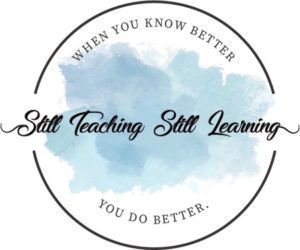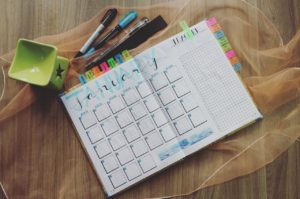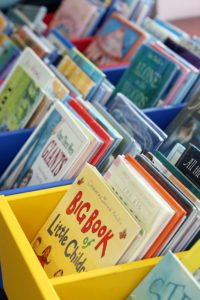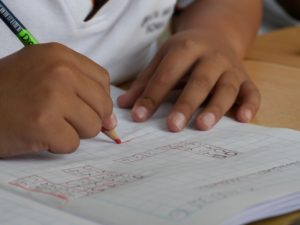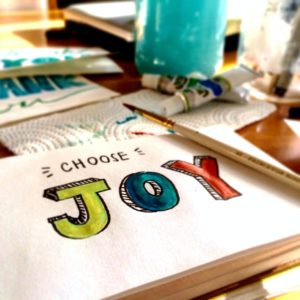
As you play and rest this summer, you may find yourself thinking about the upcoming school year.
It’s a good thing to look toward the future year and think about what we want to change or improve, but we also don’t want to spend our entire summer focused on school.
Here’s one way to keep track of those ideas without letting them take over your summer.

GENERAL REFLECTION TOPICS
Get a cute notebook and some great pens to make some lists! (You can also do this on a phone or tablet, of course.)
When I think of something for a topic or category (listed below), I can quickly jot it down in my notebook.
Writing it down helps me continue to relax, knowing that my “brilliant idea” is safely written down and I can come back to it when I’m ready.
Here are some general topics I use. Use the topics that work best for you.

~What worked well this past school year?
~What was I most proud of?
~What would I like to spend more of my time doing? (school-related, of course!)

~Which classroom procedures worked well?
~What do I want to change or improve in the next school year?
Some ideas:
Use of AI tools to make some parts of planning, etc. easier
Incorporate self-care into my school day (This post might help.)
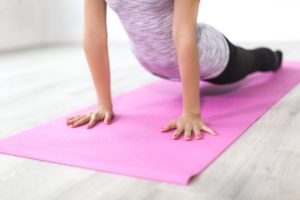
~What drove me crazy?
~What part of my day annoyed me the most?
~What drained my energy?

~What took up too much of my time?
~Which classroom procedures or routines did NOT work well?
~What are some books I want to read or things I want to learn?

~What is something I would like to try or implement that I did not have the bandwidth for doing this year?
~What children’s books do I want to use next year? (These could be for reading groups, book clubs, or read-alouds.)
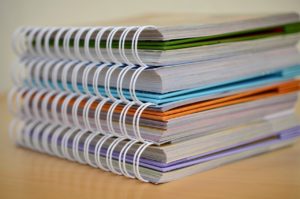
SPECIFIC REFLECTION TOPICS
If you prefer to use more specific topics to guide your thinking, try these!
1 – Procedures and Routines
Consider your classroom procedures and routines. Start at the beginning of your school day and think through the entire day. What procedures and routines will you keep? What would you like to set up differently next year? You don’t have to actually come up with new ideas yet – jot down whatever comes to mind. (Here’s my free resource for planning procedures and routines!)
Another thing to think about is seating arrangements. How did you arrange the seats or tables this year? What other arrangements have you seen in other classrooms that might work for you? Jot them down now.

2 – Classroom Displays
Do you have ideas for displays you’d like to create for next year? Create a list of what was helpful this year, or what you would like to have on display. Do you have a cute idea for a welcome display for next year’s class? Any other decoration ideas? How about your classroom library or reading area? Do you want to add some lamps or rugs?

3 – Do Better
Reflect on what you want to improve next year. Would you like to implement guided math or more math centers? How about hands-on science activities?

If you want to do more planning, here are some areas to consider:
*how you’ll organize your literacy block
*how you’ll organize your math block
*changes for content area instruction

*spending time with your PLC or grade level team (even just one coffee or drinks date)
*thinking through your pacing guide for the year (literacy, math, content areas)
*a homework plan/policy

4 – Relationships
What did you do that helped build student relationships or your classroom community this year? What would you like to try next year? What were some things that got in the way of your classroom community? Who are some teachers you learned from this year? Who might you want to learn from next year?
If you’re interested in learning more about some of my favorite classroom community topics, here you go:
~10 Easy Tips to Build Classroom Community
~8 Tips for Building Relationships Throughout the School Year
~Using Class Meetings & Restorative Practices
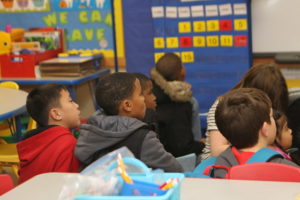
5 – Learn
Think about what you want to learn this summer. Are there teacher books you want to read?
Would you like to learn more about the science of reading? (Here is a list of resources!)
How about finding some new resources for math, science, or social studies? (Here are some resources or math and for science/social studies.)

6 – First Day/First Week
What are your plans for the first day and first week? Review your plans from the past year and consider what worked well and what you would like to keep. How about books to read aloud?
Here is a link to an e-book I wrote about back to school planning. And this e-book gives more step-by-step directions for the first two weeks of school.
I have several good first day/first week resources in my TPT store (some are free!).
Here are some blog posts with other suggestions:
Teacher’s Guide to the Best First Day of School
Engaging Activities for the First Two Weeks of School
10 Great Back to School Activities
10 More Great Back to School Activities

7 – Supplies
Begin making a list of supplies you want for your classroom next year. Maybe you need a new electric pencil sharpener or a new birthday poster.
You don’t have to purchase anything, but having a shopping list (or a list of supplies to get from your school) will put you ahead of the game in August. (By the way – think about getting the supplies on your list during Amazon Prime Days or the Target Teacher Appreciation Event.)
Here’s a list of useful classroom supplies.
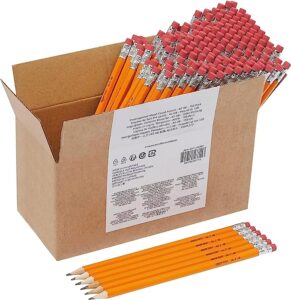
8 – Habits & Teacher Routines
Reflect on your energy and self-care. What worked well for you this year? What would you like to do differently next year? What habits and routines would help you to take better care of yourself next year?
Consider these things now and create a plan before those busy August workdays.

Finally, consider how you can prevent burnout next year. Three ways to do that are: planning your month/week/day in advance, delegating whatever you can, and deleting as much as you can.
Here is a post about planning your week and accounting for all those things you need to do, including things that energize you and that you want to do, and looking for what you can delegate or delete.
To recap:
*choose your way to make some lists
*create topics for yourself
*when you think of things you want to add, jot them down!
*when you have the energy for more detailed plannning, take a look at your lists as your starting point
Enjoy your well-earned summer! Whether you wait to plan in August or whether you like to do small bits of planning all summer – do what works best for YOU.
All of my content is intended to save teachers time and energy. My goal is to make good teaching sustainable while having a life outside of teaching. Let me know how I can help YOU with this quick form!
